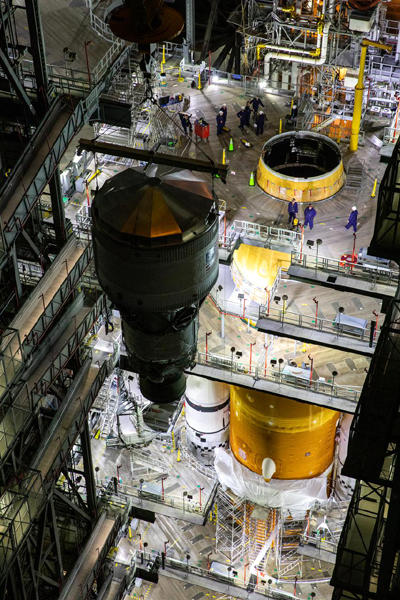
SpaceX
Statement on Blue Origin-Dynetics Decision (Press Release)
The following is a statement from Kenneth E. Patton, Managing Associate General Counsel for Procurement Law at GAO, regarding today’s decision resolving the protests filed by Blue Origin Federation, LLC, and Dynetics, Inc. – A Leidos Company, B-417839 et al., Friday, July 30, 2021.
On Friday, July 30, 2021, the U.S. Government Accountability Office (GAO) denied protests filed by Blue Origin Federation, LLC, of South Kent, Washington, and Dynetics, Inc.-A Leidos Company, of Huntsville, Alabama. The protesters challenged their non-selection for awards and the award of optional contract line item numbers to Space Exploration Technologies Corp. (SpaceX), of Hawthorne, California, under Option A to Appendix H of Broad Agency Announcement (the announcement) No. NNH19ZCQ001K.
Broad Agency Announcements typically provide for the acquisition of basic and applied research for new and creative research or development solutions to scientific and engineering problems. The rules for these procurements are not the same as those for standard competitive federal procurements, as agencies generally enjoy broader discretion in selecting the proposals most suitable to meeting their research and development needs when utilizing broad agency announcement procedures. The announcement was issued by the National Aeronautics and Space Administration (NASA), for a demonstration mission for a Human Landing System for lunar exploration.
NASA made award to SpaceX for a total evaluated price of $2,941,394,557. After noting that SpaceX submitted the lowest-priced proposal with the highest rating, and that the offers submitted by Blue Origin and Dynetics were significantly higher in price, NASA also concluded that the agency lacked the necessary funding to make more than one award.
In the challenge filed at GAO, the protesters argued that the agency was required to make multiple awards consistent with the announcement’s stated preference for multiple awards. Alternatively, the protesters alleged that the agency was required to open discussions, amend, or cancel the announcement when NASA, after the receipt of proposals, determined that it had less funding than it needed to support multiple HLS awards. The protesters also argued that NASA unreasonably evaluated all three of the proposals. Finally, the protesters argued that NASA improperly waived a mandatory solicitation requirement for SpaceX.
In denying the protests, GAO first concluded that NASA did not violate procurement law or regulation when it decided to make only one award. NASA’s announcement provided that the number of awards the agency would make was subject to the amount of funding available for the program. In addition, the announcement reserved the right to make multiple awards, a single award, or no award at all. In reaching its award decision, NASA concluded that it only had sufficient funding for one contract award. GAO further concluded there was no requirement for NASA to engage in discussions, amend, or cancel the announcement as a result of the amount of funding available for the program. As a result, GAO denied the protest arguments that NASA acted improperly in making a single award to SpaceX.
GAO next concluded that the evaluation of all three proposals was reasonable, and consistent with applicable procurement law, regulation, and the announcement’s terms.
Finally, GAO agreed with the protesters that in one limited instance NASA waived a requirement of the announcement for SpaceX. Despite this finding, the decision also concludes that the protesters could not establish any reasonable possibility of competitive prejudice arising from this limited discrepancy in the evaluation.
GAO’s decision expresses no view as to the merits of these proposals. Judgments about which offeror will most successfully meet the government’s needs are reserved for the procuring agencies, subject only to statutory and regulatory requirements. GAO’s bid protest process is handled by GAO’s Office of General Counsel and examines whether procuring agencies have complied with procurement laws and regulations.
Today’s decision was issued under a protective order because the decision may contain proprietary and source selection sensitive information. GAO has directed counsel for the parties to promptly identify information that cannot be publicly released so that GAO can expeditiously prepare and release a public version of the decision. When the public version of the decision is available, it will be posted to our website, “www.gao.gov.”
Source: U.S. Government Accountability Office














































